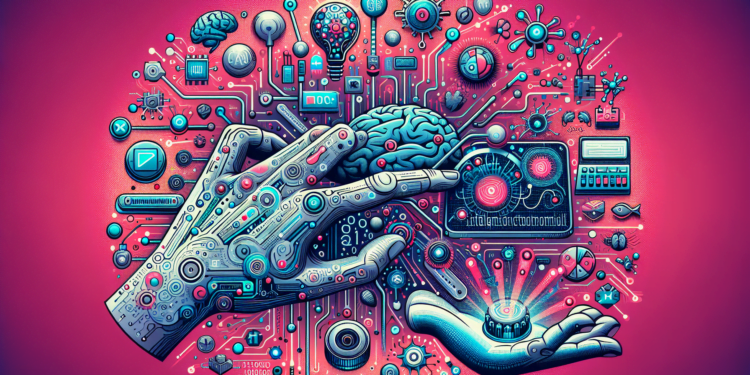The fusion of Artificial Intelligence (AI) with intelligent control has ushered in an era of technological innovations capable of revolutionizing entire industries. This article delves into the technical concepts that form the core of these advancements, outlining a specialized glossary to serve as a reference for professionals and enthusiasts of the tech sector. With the intent to provide clarity and depth, each term will be addressed from its basic definition to its implication in cutting-edge technologies.
Machine Learning Algorithms
Supervised Learning: Algorithms designed to learn from a set of labeled data, enabling the machine to predict outcomes for new data. Its application in intelligent control has allowed for the development of autonomous vehicles that can make real-time decisions.
Unsupervised Learning: Technique in which models identify hidden patterns in unlabeled data. Intelligent control systems benefiting from this technique can perform more effective information clustering, such as traffic flow optimization in urban settings.
Reinforcement Learning: A model interacts with a dynamic environment to perform a certain task; with each action, it receives feedback in the form of rewards. This is critical in intelligent control for the development of robotic systems that learn and adapt autonomously.
Neural Networks and Deep Learning
Artificial Neural Network: A computational structure inspired by the functioning of the human brain, consisting of interconnected nodes that work together to carry out specific tasks. It is applied in intelligent control to improve signal processing and the performance of complex tasks with high efficiency.
Deep Learning: A set of algorithms based on deep neural networks. This technology has been the cornerstone for advances in natural language processing (NLP), computer vision, and pattern recognition systems, all applicable to intelligent control.
Autonomous and Adaptive Control Systems
Model Predictive Control: Advanced control technique that uses models to predict the future behavior of a system. It is essential for the development of energy management systems in smart buildings.
Intelligent PID Controller: A classic PID controller with the addition of AI capabilities. It is used in industrial environments to adjust processes with greater precision and energy efficiency.
Big Data and Internet of Things (IoT)
Big Data Analysis: The process of examining large data sets to discover hidden patterns. In the context of intelligent control, it is used for predictive analysis and real-time decision making.
IoT: The interconnection of everyday devices over the internet. Thanks to AI, IoT becomes a central component of intelligent control, allowing devices to interact and respond autonomously.
Ethics and Security in AI
Algorithmic Bias: An inherent issue in AI systems reflecting the biases present in their training data. It is an area of interest for intelligent control, ensuring that decisions made by these machines do not perpetuate inequalities or injustices.
AI Security: The establishment of protocols and measures to protect AI systems from malicious attacks and errors. This component is crucial when these systems have control over critical infrastructure.
Conclusions and Future Perspectives
The integration of artificial intelligence in the field of intelligent control is a promising discipline evolving at a breakneck pace. With the adoption of advanced machine learning techniques and the incorporation of IoT, intelligent control is enabling autonomous solutions that not only optimize existing processes but also open avenues for the creation of new applications and industries. Ethics and security in AI underscore the need to have a solid regulatory framework that accompanies these advances. With adequate technological literacy and the adoption of an interdisciplinary approach, developments in AI and intelligent control will continue to exceed the barriers of what is technically possible, always with an eye towards human well-being and respect for the diversity of thought and action that characterizes our society.
As this field continues to grow, it is essential for professionals to stay abreast of theoretical and practical developments in AI. This glossary provides a foundation, but only through ongoing commitment to continued education and research will these technologies be applied for the greatest benefit of humanity.






















